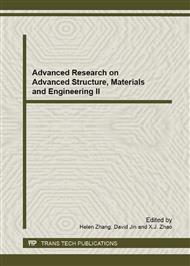p.67
p.71
p.75
p.79
p.85
p.89
p.93
p.98
p.103
Introduction and Comparison of Wind Load Codes for Advanced Structure between Chinese, American and British
Abstract:
China is developing overseas construction projects, it is necessary for the designers to grasp codes. This paper compares and analyzes Chinese code GB50009-2001, American standard ASCE/SEI7-05 and British standard BS6399-2 about advanced structure. And the writer calculates the empirical projects' wind-loads by Chinese code, American standard and British standard, compares the difference and points out the deficiency of domestic code. So as to improve the designers to master different wind load standards and promote the improvement of inland standard.
Info:
Periodical:
Pages:
85-88
Citation:
Online since:
May 2013
Authors:
Keywords:
Price:
Сopyright:
© 2013 Trans Tech Publications Ltd. All Rights Reserved
Share:
Citation:


